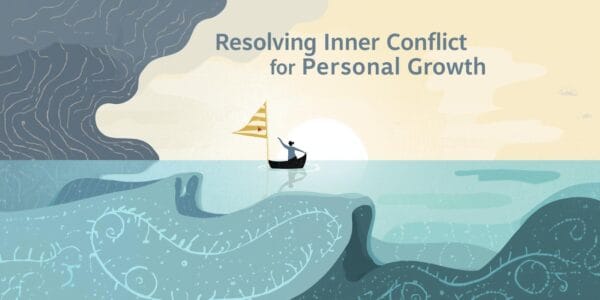In the vast ocean of life, we often find ourselves adrift, caught in the storm of inner conflicts. These conflicts often stem from a clash between our needs, desires, values, and the realities of our lives. To navigate these turbulent waters, we turn to the beacon of psychological theories, such as Erik Erikson’s stages of psychosocial development.
Erikson’s theory, a pillar in the field of psychology, provides a roadmap for understanding human development across the lifespan. It outlines eight stages, each characterized by a unique conflict that must be resolved for healthy development.
Erikson’s Stages of Psychosocial Development

Erikson’s theory divides human life into eight stages, from infancy to late adulthood. Each stage is marked by a psychosocial conflict that needs to be resolved for the individual to move forward. These conflicts range from trust versus mistrust in infancy, to integrity versus despair in old age. Each stage and its associated conflict contribute to the formation of our personalities and our understanding of ourselves and the world.
Understanding Inner Conflict through Erikson’s Theory
- Childhood stages and inner conflict: In the early stages of life, inner conflicts often revolve around basic trust, autonomy, and initiative. A child who struggles with these conflicts may grow into an adult who finds it difficult to trust others, assert themselves, or take initiative.
- Adolescence stage and inner conflict: This stage, characterized by the conflict of identity versus role confusion, often triggers significant inner conflict. Adolescents are trying to figure out who they are and where they fit in the world, leading to confusion and conflict.
- Young adulthood stage and inner conflict: The conflict at this stage is intimacy versus isolation. Young adults are figuring out how to balance their personal and professional lives, leading to inner conflict.
- Middle adulthood stage and inner conflict: The conflict here is generativity versus stagnation. Adults at this stage may struggle with the idea of leaving a legacy and making a difference, leading to inner conflict.
- Late adulthood stage and inner conflict: The final stage involves the conflict of integrity versus despair. This can lead to inner conflict as individuals reflect on their lives and grapple with mortality.
Case Studies
Understanding Erikson’s theory can provide valuable insights into our inner conflicts. For example, a young adult struggling with isolation may find that their conflict stems from unresolved issues of trust from their infancy stage. Similarly, an older adult feeling despair may trace their conflict back to their adolescence stage, where they struggled with their identity.
Strategies for Resolving Inner Conflict

Understanding our inner conflict through the lens of Erikson’s theory is the first step towards resolution. Therapeutic approaches, such as psychotherapy or counseling, can help individuals navigate their conflicts and find resolution. Self-help strategies, such as mindfulness, self-reflection, and journaling, can also be beneficial.
Conclusion
Erikson’s theory of psychosocial development offers a powerful tool for understanding and resolving our inner conflicts. By recognizing the stages of our development, we can better understand the roots of our conflicts and navigate towards resolution and growth. As we sail through the stormy seas of life, let Erikson’s theory be our compass, guiding us towards inner peace and fulfillment.




